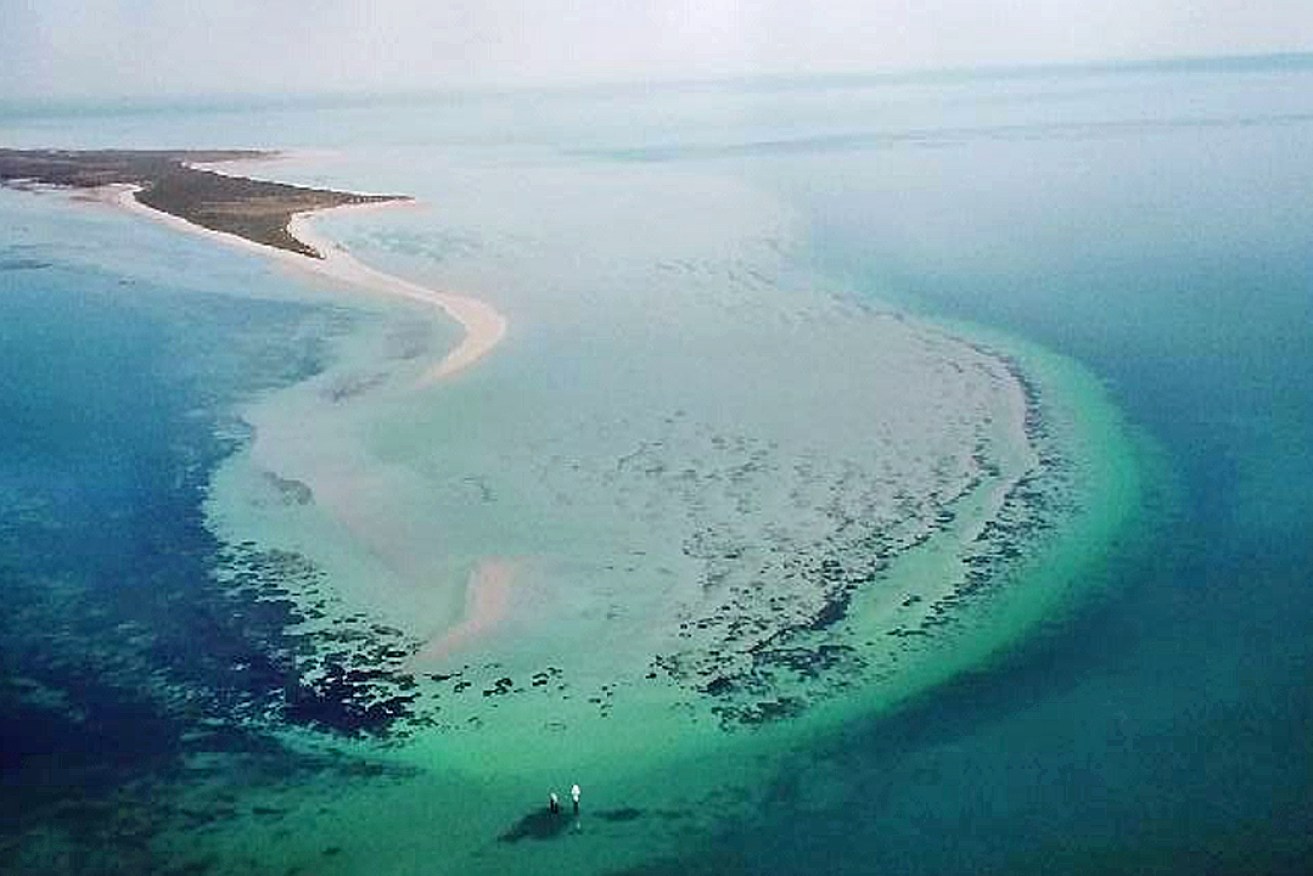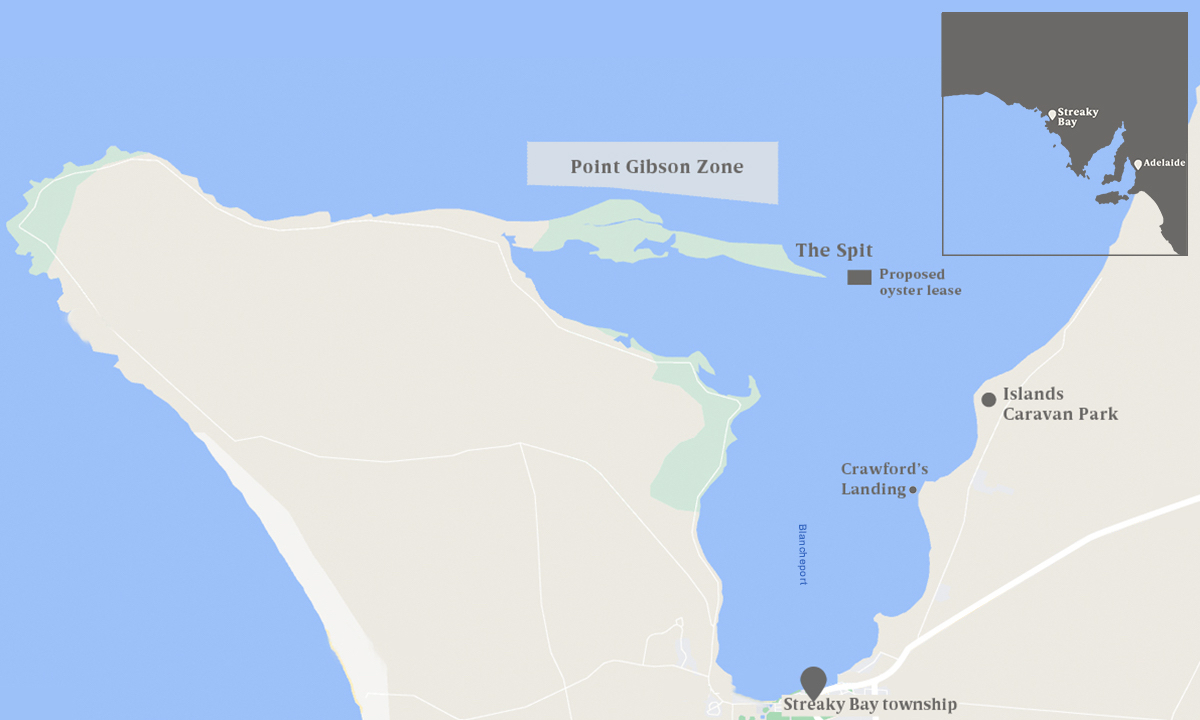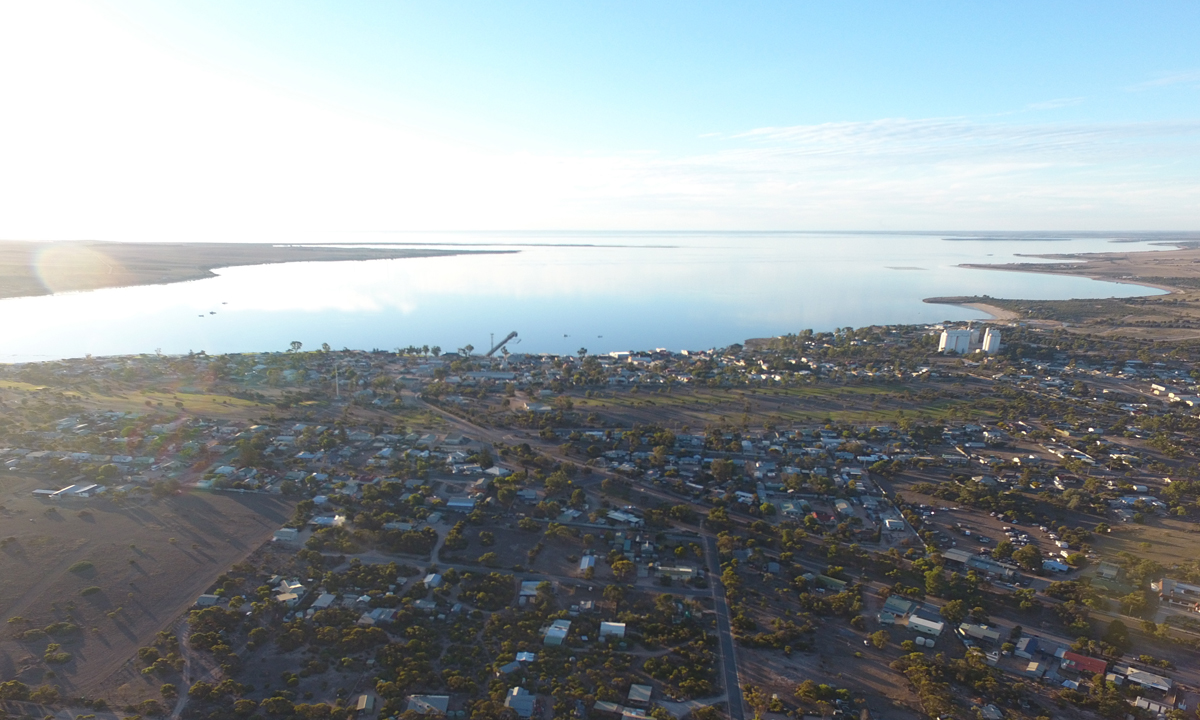Streaky Bay battle over oyster spat for spit
Residents, business owners and oyster growers in the Eyre Peninsula town of Streaky Bay are battling a proposal to develop a five-hectare oyster lease in what they say is an environmentally sensitive and visually prominent part of the bay known as The Spit.


A proposal to develop an oyster lease off the end of the Point Gibson spit at Streaky Bay is causing community concern. Picture: David Lewis.
Streaky Bay District Council will tomorrow vote on the proposal by local grower Paul Evans before Primary Industries and Regions SA (PIRSA) has the final say on the application.
The farming, fishing and tourist town with a population of about 2000 people has been home to oyster leases since the early 1990s.
But it is the location of the proposed Evans Oysters lease off the end of the Point Gibson spit that has the community up in arms as it is visible from the town and more prominently from the nearby Islands Caravan Park.
“The Spit” is a much-loved spot for locals and tourists to swim, birdwatch and picnic and was also included as a high priority conservation area in the council’s 2011 coastal management plan.
Locals say the application also goes against an agreement between growers, PIRSA and the local community dating back to the 1990s that oyster leases would be positioned in areas that could not be seen from the Streaky Bay township.
In her report to be tabled at Wednesday’s meeting, Streaky Bay Council CEO Karina Ewer said the community and PIRSA agreed when the Streaky Bay Aquaculture Zone was initially created more than 20 years ago that oyster leases would be positioned in areas that would not impact on the ocean views enjoyed from the Streaky Bay township.
“This was a ‘gentleman’s agreement’ that was then meant to be included in the Streaky Bay Aquaculture Zone regulation/legislation, however it was never documented nor included,” she wrote.
The exclusion of the agreement from the aquaculture zone plan, which was updated in 2011, came to light in 2014 after Evans Oysters was granted a lease at Crawford’s Landing on the eastern side of Blancheport.
“This caused great upset within the Streaky Bay community including the local oyster industry,” Ewer’s report said.
“PIRSA reviewed its consultation process to include the opportunity for more stakeholder input as a direct result of complaints received after the awarding of the Crawford Landing lease.”
In the council report, Ewer said if allocated, the lease would require Evans Oysters to invest up to $250,000 to establish.
The council has received 10 community submissions – one for the proposal and nine against. The submissions included a 53-signature petition and a survey of Streaky Bay Tourism & Business Association members, who were overwhelmingly opposed.

A letter opposing the application and signed by the eight other oyster growers in the Point Gibson Zone has been lodged with PIRSA and the South Australian Oyster Growers Association.
Evans Oysters owner Paul Evans said the site had the highest daily water flow into and out of the bay, which was the key ingredient for viable and sustainable oyster farming, of any area in Streaky,
He said his proposed site was almost 8km from town.
“The local council here wants to encourage greater diversity of employment and allow different sectors to evolve and that’s what I’m trying to do – allow our industry to evolve into areas that have that higher water flow,” said Evans, who will present his case to tomorrow’s council meeting.
“I can only see this as a good thing for the oyster industry to allow us to farm the best water in Streaky Bay and allow our industry to evolve into the next 25 years and become more robust and sustainable, which obviously helps the town.”
Evans Oysters has several other leases in the Streaky Bay region and has two full-time staff and a handful of casuals. It plans to potentially expand its staff to up to five full-timers.
Evans said the proposed lease area was more than 700 metres from the spit’s high-tide mark and would not impact birdwatching which was primarily done from the shore.
He said the lease would not take up the whole spit area, meaning that people could still pull up in their boats for a swim.
The agreement, Evans said, was made more than 20 years ago and had been superseded by legislation. It was also well before he took over the family business from his father Tom in about 2013, he said.
“It’s a multi-million-dollar industry now, it can’t be governed by what someone said they said – that’s what legislation is there for,” Evans said.
“If we’re not successful in this application, someone else can come along and apply for that same water and we would look a bit silly if we let someone from another region come and set up an oyster farm in what we view as the most productive water in Streaky Bay.
“I’ve been canvassing the town continuously over the past 20-odd days … there’s a lot of support for it and if there was absolutely no support for it, I wouldn’t do it.”

The West Coast town of Streaky Bay is home to about 2000 people. Picture: Deane Coombs.
Streaky Bay Oysters owner Reg Brown, who has farmed oysters in the area since the 1990s will make a deputation to the council on Wednesday on behalf of Point Gibson oyster growers.
Brown said as well as ruining the amenity of the area, an oyster lease so close to The Spit would impact the amount of nutrients flowing into leases in the nearby Point Gibson Zone and would be “a green light for other applicants” to develop leases between The Spit and the zone.
He said he had documents going back to November 2000 showing the council requesting protection of the area where the Crawford’s Landing lease was later approved and The Spit.
Before 2011, applications to establish oyster leases at Crawford’s Landing and The Spit had been lodged and rejected, Brown said.
“But with the removal of those lines on the map in 2011, it apparently made it available,” he said.
“I never thought that one of our own would do it.
“I believe that when we first established the Point Gibson Zone we did it with a social licence and in agreement with people in the township and I’m scared that we are losing our social licence.”
Brown said the Evans Oysters application should be denied or put on hold until a full review of the management plan could be completed.
He said the growers’ submission to PIRSA included a call for a new management plan with more exclusion zones in sensitive areas “so we do not have to continue to fight these battles”.
“It’s just so pristine – it’s a magnificent entrance to our bay with really nice birdlife and it’s just really peaceful,” Brown said of The Spit.
“If you go to places overseas you don’t see anything like that because it’s all developed.”
About 4,000ha of aquaculture area is currently allocated and being farmed in South Australia, employing about 2000 people in aquaculture-related activities.
The State Government announced in March 2020 it would release more than 6500ha of unallocated and available water for aquaculture production from Tumby Bay to Streaky Bay. Up to 40ha of water in the greater Streaky Bay region has been earmarked for potential new leases. The 5ha Evans Oysters application is the only new application in the area so far.
At the time, former Primary Industries Minister Tim Whetstone said the release supported the Marshall Government’s agenda to grow the state’s economy and create new regional jobs.




